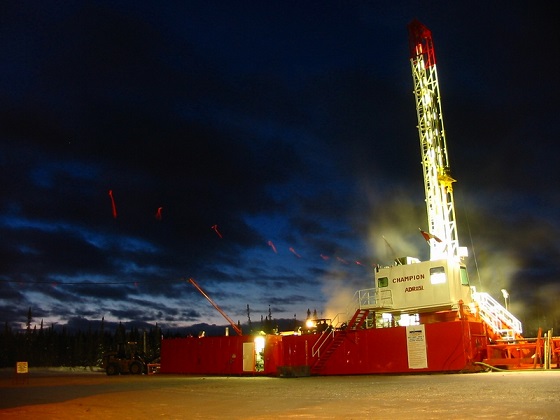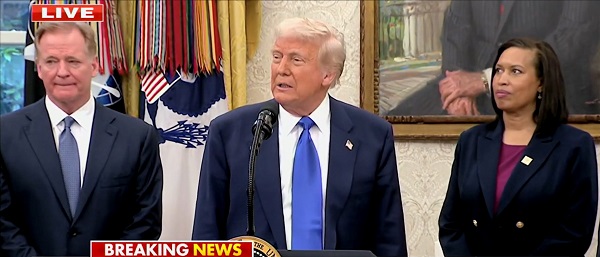Energy
Canada Embracing Carbon Capture and Storage (CCS) to Reduce Emissions and Sustain Energy Industry

From EnergyNow.ca
Alberta has firmly led the Canadian charge on CCS. It has more CO2 storage capacity than Norway, Korea, India, and double the entire Middle East, according to the Global CCS Institute.
Back in 2007, the Alberta and federal governments established a task force on carbon capture and storage (CCS) as a way of reducing emissions from oil, gas, and energy operations. That led to a report in 2008 that said: “CCS is seen as a technological solution that allows Canada to continue to increase its energy production while reducing (carbon dioxide) emissions from these activities. . . .
“CCS is strategically important to Canada for several reasons. First and foremost, Canada is endowed with an abundance of fossil fuels (including an unparalleled oil sands resource).”
The task force noted that public support for CCS was high, with 64% of the public being open to the idea of government financial support for CCS. All that happened under the Conservative Stephen Harper government, which, in 2015, lost power to the Justin Trudeau Liberals.
Trudeau himself went on to say in 2017 these memorable words: “No country would find 173 billion barrels of oil in the ground and leave them there.”
That’s not a message repeated since, and certainly not by his relentless minister of environment and climate change, Steven Guilbeault. On CCS, Guilbeault maintains that while carbon capture and storage “is happening in Canada,” it is not the “be-all and end-all.”
Much more positively, we now have Jonathan Wilkinson, Canada’s energy and natural resources minister, saying he expects 20 to 25 commercial-scale CCS projects to break ground in Canada within the next decade.
And we finally have what Ottawa first promised in 2021: a system of tax credits for investments in carbon capture — which industry sees as a way to get those 20 to 25 carbon-capture projects built.
The tax incentive covers up to 50 per cent of the capital cost of CCS and CCUS carbon-capture projects. Although energy company Enbridge points out that tax incentives in the U.S. are more attractive than what Canada is offering.
“CCUS” is one of the carbon-capture models. It stands for Carbon Capture Use and Storage or Carbon Capture Utilization and Sequestration. Under CCUS, captured carbon dioxide can be used elsewhere (for example, to increase the flow from an oilfield, or locked into concrete). Or it can be permanently stored underground, held there by rock formations or in deep saltwater reservoirs.
Canada’s climate plan includes this: “Increased use of CCUS features in the mix of every credible path to achieving net zero by 2050.”
As well, the feds have supported a couple of smaller CCS projects through the Canada Growth Fund and its “carbon contract for difference” approach.
To date, Alberta has firmly led the Canadian charge on CCS. It has more CO2 storage capacity than Norway, Korea, India, and double the entire Middle East, according to the Global CCS Institute.
 From the Alberta government’s Canadian Energy Centre
From the Alberta government’s Canadian Energy Centre
In the most recent move in Alberta, Shell Canada announced it is going ahead with its Polaris carbon capture project in Alberta. It is designed to capture up to 650,000 tonnes of carbon dioxide annually from Shell’s Scotford refinery and chemicals complex near Edmonton.
That works out to approximately 40 per cent of Scotford’s direct CO2 emissions from the refinery and 22 per cent of its emissions from the chemicals complex.
Shell’s announcement sparked this from Wilkinson: “The Shell Polaris announcement last week was a direct result of the investment tax credit.”
Also in Alberta, the Alberta government notes: “The Alberta government has invested billions of dollars into carbon capture, utilization and storage (CCUS) projects and programs. . . . The Alberta government is investing $1.24 billion for up to 15 years in the Quest and Alberta Carbon Trunk Line (ACTL) projects.”
Quest is Shell’s earlier Scotford project. “The project is capturing CO2 from oil sands upgrading and transporting it 65 km north for permanent storage approximately 2 km below the earth’s surface. Since commercial operations began in 2015, the Quest Project has captured and stored over 8 million tonnes of CO2.”
The Alberta Carbon Trunk Line is a 240-km pipeline that carries CO2 captured from the Sturgeon Refinery and the Nutrien Redwater fertilizer plant to enhanced oil recovery projects in central Alberta. Since commercial operations began in 2020, the ACTL Project has captured and sequestered over 3.5 million tonnes of CO2.
Shell and partner ATCO EnPower now plan a new CCS project at Scotford. And, on a smaller scale, Entropy Inc. will add a second phase of CCS at its Glacier gas plant near Grande Prairie.
And those are just two of Alberta’s coming CCS projects. That province is working on at least 11 more that could lead to over $20 billion in capital expenditures and reduce about 24 million tonnes of emissions annually — the equivalent of reducing Alberta’s annual industrial emissions by almost 10 per cent.
And then there’s the giant CCS project proposed by the Pathways Alliance, a partnership representing about 95% of Canada’s oil sands production.
“The project would see CO2 captured from more than 20 oil sands facilities and transported 400 kilometers by pipeline to a terminal in the Cold Lake area, where it will be stored underground in a joint carbon-storage hub. . . . A final investment decision is expected in 2025.”
Alberta alone has more CO2 storage capacity than Norway, Korea, India, and double the entire Middle East, according to the Global CCS Institute.
When Wilkinson spoke in favor of CCS, Capital Power had just backed away from building a carbon-capture facility at its Genesee power plant in Alberta. But Enbridge, which would have built the associated storage hub, is still “strongly interested.”
In Saskatchewan, which also offers government support for CCS, more than 5 million tonnes of CO2 have been captured at SaskPower’s Boundary Dam 3 power plant. “Someone would have to plant more than 69 million trees and let them grow for 10 years to match that.”
In B.C., natural gas company FortisBC offers small-scale carbon-capture technology to help businesses that use natural gas to save energy and decrease greenhouse gas emissions.
And the B.C. government says that, potentially, two to six large-scale CCS projects could be developed in northeast B.C. over the next decade.
“Small-scale operations currently exist in B.C. that inject a mixture of CO2 and H2S (hydrogen sulfide) deep into underground formations. This process, which is referred to as acid-gas disposal, already occurs at 12 sites.”
Elsewhere, CCS projects are operating or being developed around the world, including in Australia, Denmark, and the U.S. A CCS project in Norway has been in operation for 28 years.
It took a while to get the ball rolling in Canada, but CCS/CCUS is here to stay, reducing emissions and keeping industries alive to contribute to the economy.
Automotive
Federal government should swiftly axe foolish EV mandate

From the Fraser Institute
Two recent events exemplify the fundamental irrationality that is Canada’s electric vehicle (EV) policy.
First, the Carney government re-committed to Justin Trudeau’s EV transition mandate that by 2035 all (that’s 100 per cent) of new car sales in Canada consist of “zero emission vehicles” including battery EVs, plug-in hybrid EVs and fuel-cell powered vehicles (which are virtually non-existent in today’s market). This policy has been a foolish idea since inception. The mass of car-buyers in Canada showed little desire to buy them in 2022, when the government announced the plan, and they still don’t want them.
Second, President Trump’s “Big Beautiful” budget bill has slashed taxpayer subsidies for buying new and used EVs, ended federal support for EV charging stations, and limited the ability of states to use fuel standards to force EVs onto the sales lot. Of course, Canada should not craft policy to simply match U.S. policy, but in light of policy changes south of the border Canadian policymakers would be wise to give their own EV policies a rethink.
And in this case, a rethink—that is, scrapping Ottawa’s mandate—would only benefit most Canadians. Indeed, most Canadians disapprove of the mandate; most do not want to buy EVs; most can’t afford to buy EVs (which are more expensive than traditional internal combustion vehicles and more expensive to insure and repair); and if they do manage to swing the cost of an EV, most will likely find it difficult to find public charging stations.
Also, consider this. Globally, the mining sector likely lacks the ability to keep up with the supply of metals needed to produce EVs and satisfy government mandates like we have in Canada, potentially further driving up production costs and ultimately sticker prices.
Finally, if you’re worried about losing the climate and environmental benefits of an EV transition, you should, well, not worry that much. The benefits of vehicle electrification for climate/environmental risk reduction have been oversold. In some circumstances EVs can help reduce GHG emissions—in others, they can make them worse. It depends on the fuel used to generate electricity used to charge them. And EVs have environmental negatives of their own—their fancy tires cause a lot of fine particulate pollution, one of the more harmful types of air pollution that can affect our health. And when they burst into flames (which they do with disturbing regularity) they spew toxic metals and plastics into the air with abandon.
So, to sum up in point form. Prime Minister Carney’s government has re-upped its commitment to the Trudeau-era 2035 EV mandate even while Canadians have shown for years that most don’t want to buy them. EVs don’t provide meaningful environmental benefits. They represent the worst of public policy (picking winning or losing technologies in mass markets). They are unjust (tax-robbing people who can’t afford them to subsidize those who can). And taxpayer-funded “investments” in EVs and EV-battery technology will likely be wasted in light of the diminishing U.S. market for Canadian EV tech.
If ever there was a policy so justifiably axed on its failed merits, it’s Ottawa’s EV mandate. Hopefully, the pragmatists we’ve heard much about since Carney’s election victory will acknowledge EV reality.
Daily Caller
Trump Issues Order To End Green Energy Gravy Train, Cites National Security


From the Daily Caller News Foundation
By Audrey Streb
President Donald Trump issued an executive order calling for the end of green energy subsidies by strengthening provisions in the One Big Beautiful Bill Act on Monday night, citing national security concerns and unnecessary costs to taxpayers.
The order argues that a heavy reliance on green energy subsidies compromise the reliability of the power grid and undermines energy independence. Trump called for the U.S. to “rapidly eliminate” federal green energy subsidies and to “build upon and strengthen” the repeal of wind and solar tax credits remaining in the reconciliation law in the order, directing the Treasury Department to enforce the phase-out of tax credits.
“For too long, the Federal Government has forced American taxpayers to subsidize expensive and unreliable energy sources like wind and solar,” the order states. “Reliance on so-called ‘green’ subsidies threatens national security by making the United States dependent on supply chains controlled by foreign adversaries.”
Dear Readers:
As a nonprofit, we are dependent on the generosity of our readers.
Please consider making a small donation of any amount here.
Thank you!
Former President Joe Biden established massive green energy subsidies under his signature 2022 Inflation Reduction Act (IRA), which did not receive a single Republican vote.
The reconciliation package did not immediately terminate Biden-era federal subsidies for green energy technology, phasing them out over time instead, though some policy experts argued that drawn-out timelines could lead to an indefinite continuation of subsidies. Trump’s executive order alludes to potential loopholes in the bill, calling for a review by Secretary of the Treasury Scott Bessent to ensure that green energy projects that have a “beginning of construction” tax credit deadline are not “circumvented.”
Additionally, the executive order directs the U.S. to end taxpayer support for green energy supply chains that are controlled by foreign adversaries, alluding to China’s supply chain dominance for solar and wind. Trump also specifically highlighted costs to taxpayers, market distortions and environmental impacts of subsidized green energy development in explaining the policy.
Ahead of the reconciliation bill becoming law, Trump told Republicans that “we’ve got all the cards, and we are going to use them.” Several House Republicans noted that the president said he would use executive authority to enhance the bill and strictly enforce phase-outs, which helped persuade some conservatives to back the bill.
-

 Crime2 days ago
Crime2 days ago“This is a total fucking disaster”
-

 Fraser Institute1 day ago
Fraser Institute1 day agoBefore Trudeau average annual immigration was 617,800. Under Trudeau number skyrocketted to 1.4 million annually
-

 International2 days ago
International2 days agoChicago suburb purchases childhood home of Pope Leo XIV
-

 MAiD2 days ago
MAiD2 days agoCanada’s euthanasia regime is already killing the disabled. It’s about to get worse
-

 Daily Caller2 days ago
Daily Caller2 days ago‘I Know How These People Operate’: Fmr CIA Officer Calls BS On FBI’s New Epstein Intel
-

 Daily Caller2 days ago
Daily Caller2 days agoBlackouts Coming If America Continues With Biden-Era Green Frenzy, Trump Admin Warns
-

 Red Deer1 day ago
Red Deer1 day agoJoin SPARC in spreading kindness by July 14th
-

 Business1 day ago
Business1 day agoPrime minister can make good on campaign promise by reforming Canada Health Act






